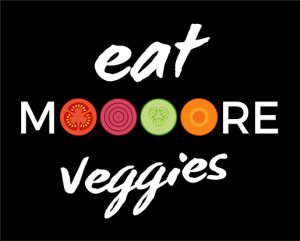 The astounding benefits of reducing meat consumption and increasing plant-based nutrition are persuading many people to give vegetarianism and veganism a go. However, you don’t need to make a big dietary commitment to get the huge benefits of a plant-focussed diet.
The astounding benefits of reducing meat consumption and increasing plant-based nutrition are persuading many people to give vegetarianism and veganism a go. However, you don’t need to make a big dietary commitment to get the huge benefits of a plant-focussed diet.
Making changes to your diet can seem stressful, however, if you take it slowly and do it one step at a time it can be simple, easy and fun. Gradual experimentation, finding what plant-based foods you like and learning different cooking and preparation methods all take time. In this article, I will share with you some gentle ways to successfully and strategically increase plant-based nutrition for you and your family.
Flavour and Texture
The taste and texture of food is really important. Working out what you find satisfying currently will help you introduce similar plant-based alternatives. Do you like crunchy foods? Spicy flavours? Soft comforting textures?
Think about what you like about your current meat-based favourites and see if you can replace or reduce the meat. A simple internet search will reveal appetising plant-based alternatives to many favourite dishes and snacks.
The more satisfied you feel with your plant based dining the more willing you will be to experiment further. If you make or buy something you don’t like, don’t feel like you have to eat it. Forcing yourself, or somebody else, to eat something that isn’t enjoyable causes more harm than good in the long run.
Food should be enjoyed and everybody’s preferences and tastes are different. Experiment, investigate, research and most importantly enjoy your food adventures.
Timing is Key
If you would like to adapt your own dietary habits or influence those around you, it is crucial to make your changes carefully. Changes to long established habits naturally provoke emotions of uncertainty, anxiety and even fear. Choose times and places which are low-stress, comfortable and relaxed to propose change to your family, significant other, etc. You and your loved ones will be much more tempted to try something new and intriguing when you are feeling happy and hungry! Find a time that is ideal, not Christmas, vacation or a high stress time.
Keep in mind that gradual changes are more sustainable than trying to change too much, too quickly. Take time to plan and research one or two new food items or recipes per week and make note of what works and what needs to be worked on!
#1: Fruity Fun
Fruit is naturally sweet and easy to prepare and consume. You can make it more enticing by eating a variety of different fruits, mixing up flavours and textures and adding a scrumptious sauce (made with things like mint or cocoa powder).
Chocolate is a powerful and delicious superfood (when consumed without sugar) and mixing some raw cacao powder with date paste and coconut oil makes an amazing 100% healthy chocolate sauce. Smothering fruit in guilt-free chocolate sauce could double your enjoyment of this healthful treat. Try adding some protein in the form of tasty toasted nuts to add a flavorful and decadent edge to this satisfying snack.
#2: Juice it up and Smoothie it Out
Making smoothies and fresh juice at home is probably the easiest and quickest way of getting some extra plant nutrition into your diet. Avoid store-bought drinks as they usually add some kind of sugar or the nutrient content is affected by pasteurization. Focus on vegetables not fruit – as fruit proportionally contains a lot of sugar when you make it into a liquid form. Juicing is a great way to add nutrients, specifically antioxidants, to your diet but the extraction process removes fibre which has many positive health benefits. Don’t assume you can just drink a few juices and be nutritionally balanced!
#3: Get Dippy
Dipping is a lovely way to get intimate with your food; you can cut up a wide variety of crunchy vegetables and dip them into seedy/nutty sauces or flavourful dips. How about tomato slices spread with homemade chilli peanut butter? Easier to make than it sounds… Simply put some peanuts and a fresh chilli into a food processor till smooth. Cut up your veggies while you wait. Dip and veggies is delicious and an easy snack to carry around. Home-made nut butters are satisfying to both make and eat – also they are much cheaper and healthier than shop brought versions. You can spread or dip raw veg into a wide variety of simple yet extravagant sauces meaning you never get bored. There are lots of great recipes online.
#4: Days of the Week
Depending on your routine, it may work for you to have one or two days a week that are meat-free. Having specific times set aside will create focus and help you plan to make something tasty. Gradually increase the number of meat-free meals until you find a balance that works for you.
Reducing you meat consumption has significant health benefits and it also means meat will become more of a treat. It will also be more of conscious choice you are making when you consume it rather than an unconsious habit. When you do eat meat, chose the highest quality possible (grass fed organic) and stay away from the more toxic processed meats which have a greater adverse health impact. Do your own research on factory farming, the use of antibiotics, etc.
#5: Spotlight your Veggies
The traditional “meat and two/three sides plate” approach to menu planning puts meat in the spotlight as the main source of flavour and enjoyment. Get out of this mental habit by trying out meals which highlight a specific vegetable or flavour combination instead of meat.
Mushrooms, nuts and seeds can be prepared in ways that give a meat like quality and even a smoky meat-like taste. Herbs and spices can provide a vast array of different tastes to satisfy your palette and highlight vegetables as the focus of a meal and not simply a side dish.
#6: Vegetable Variety
A lot of people have negative associations with vegetables and salads. Over-cooked broccoli, undercooked beets and soggy Brussel sprouts are the subject of vegetable nightmares! Just because your grandma used to cook the life out of vegetables doesn’t mean you can’t find tastier and healthier ways to enjoy them.
Steaming is an excellent way of preserving nutrients, texture and flavour. Stir-frying is another way to rapidly cook vegetables which keeps nutrients in-tact. Salads can be made so much more exciting with a fresh herb dressing, a variety of textures and flavours you enjoy – garlic, lemon, carrots, avocado, almonds, spinach and black pepper anyone? Variety is the spice of life.
Experimentation is Key
There is a such a wide variety of vegetables, flavours, textures and cooking methods to try that you will definitely find lot of plant-based foods you like… and most probably some you like less! Simply and gradually eat more of the plants you enjoy.
Finding ways to add more plants into your diet has so many health benefits it really is worth taking the time to do it in an enjoyable and tasty way. You might be surprised and what you like and how you feel after a hearty vegetable focussed meal.
Note: There are medical conditions for which eating more vegetables and roughage (fiber rich greens) can cause issues with digestion. If you feel worse when you eat certain vegetables, especially raw veggies, you may need to talk with your doctor about that.
References
http://farmsnotfactories.org/articles/10-easy-ways-to-reduce-your-meat-consumption/
www.slowfood.com/slowmeat/en/the-meat-we-eat/why-cut-down-on-meat/
www.sustainabletable.org/794/should-you-eat-less-meat
www.onegreenplanet.org/vegan-food/5-must-try-vegan-alternatives-for-the-die-hard-meat-eater/

Comment Via Facebook